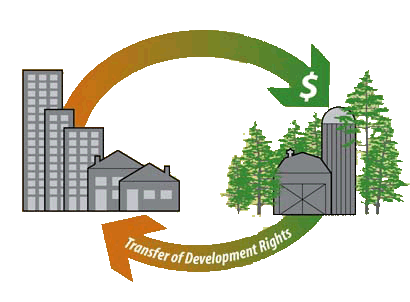The Constitution of India provides that every person is entitled for
Equality before Law and Equal Protection of Laws and there by prohibits
discrimination on the basis of Caste, Creed and Sex. The discrimination on the
basis of Sex is permissible only as protective measures to the female citizens
as there is need to empower women who have suffered gender discrimination for
centuries. Now so far as property is concerned, the daughter shall be given
every right to inherit immovable and movable property equal to that of male
members. We will examine how far this right to property of daughter has been
recognized in the laws relating to Hindus.
Prior to, Hindu Women’s Right to Properties Act 1937 the woman was
totally excluded from taking share in the Joint Family Property. The succession
to the property of male member was governed by rule of survivorship. The rule
of survivorship means on the death of a member of joint and undivided family
his share in the joint family property passes to the surviving male members
called as coparceners. Mulla defines coparceners as ‘The three generations next
to the holder in unbroken male descent.” If a man has sons, grandsons and
great-grandsons living, all of these constitute a single coparcenaries with
him. Coparceners jointly inherit property and have unity of possession. The
co-heirs and their heirs are also called coparceners so long unity of
possession continues. Co-parcenary is different from joint family. Co-parcenary
is limited to three generations next to holder; the joint family has no such
limitation. It includes all the generations of the holder. To
understand the position of Hindu daughter in the law of succession, it is
worthwhile to know important features of Co-parcenary property. There are two
different laws followed by Hindus in respect of property. Mithakshara is widely
followed in India, except in West Bengal; Dayabhaga is followed in West Bengal.
- Unity of ownership
that is the ownership of property is vested in the whole body of the
co-parceners.
- In determinability of shares
i.e. the interest of a Coparcener member in the property is a fluctuating
interest capable of being enlarged by deaths in the family and liable to
be diminished by births in the family.
- Community of interest
i.e. no co-parcener is entitled to any special interest in the
co-parcenary property nor is he entitled to exclusive possession of any
part of the property. His right is that of an undivided interest.
- Exclusion of females
i.e. females are excluded from inheriting co-parcenary property though
wife was entitled to maintenance out of her husbands property.
- Rights by birth,
co-parcenary members acquire interest in the property by birth.
- Devolution of survivorship,
one of the interesting features of Mithakshara Co-parcenary is that on the
death of a Co-parcener his interest in the property passes by survivorship
(the members who are alive) to other Co-parceners. In Dayabhaga, the
property devolves on the death of the holder. Nobody inherits any interest
by birth.
However the Hindu
women’s right To Properties Act 1937 gave a death blow to the doctrine of
survivorship, because under this act the widow of a deceased co-parcener in a
Mitakshara undivided family will have in the joint family property the same
interest which her husband had while he was alive. It may be noted that the widow has right to
claim a partition as a male owner even if there is male issues, but the widow
was not in a position to hold the property as absolute owner. Only with the passing of the Hindu Succession
Act the position of widow and daughter came to be improved. Before going further into the Act of 1956 it
is worthwhile to examine the concept of coparcenary property. Generally speaking coparcenary property is
one in which all the coparceners have community of interest and joint
possession. Such property consists of
- Ancestral property.
- Property jointly acquired by the members of the
joint family
- Separate property of a member ‘” thrown into the
common stock” with the intention of abandoning all separate claims on it,
which becomes the property of joint family.
- Property acquired by all or any of the coparceners with the aid of joint family funds.
Ancestral property means that property which descends from father,
father’s father or father’s father. The
Privy Council has held that the ancestral property is confined to property
inherited from the three immediate paternal ancestors and the property
inherited from a maternal grandfather is the absolute property of the inheritor
in which his son does not acquire any interest by birth, and that it is not
ancestral.
For the purpose of
succession to property by Hindu daughter the Hindu succession Act, divides the
property into four categories they are,
- Co-parcenary property,
- Property of male Hindu,
- Property of female Hindu and
- Dwelling house.
The provision
relating to Co-parcenary property in the Hindu succession Act 1956 is Sec.6
which provides that if a male Hindu dies leaving behind his share in
Mithakshara Co-parcenary property, such property will pass on to his sons, son’s,
son’s son by survivorship, on surviving members. In case there are female relatives like
daughter, Widow, mother, daughter of pre-deceased son daughter of predeceased
daughter widow of pre-deceased son, widow of pre-deceased son of a predeceased
son, then the interest of the deceased co-parcenary will pass on to his heirs
by succession and not by survivorship.
Example: If ‘c’ dies leaving behind his two sons only,
and no female heirs of class I then property of ‘C’ passes to his sons by
survivorship since there are no female relatives like daughter or any other
member specified in the class I of first schedule. In case ‘C’ dies leaving behind two sons and
three daughters, then property of ‘C’ will pass on to his sons and daughters by
succession in the following manner.
Firstly property of
‘C’ is divided among ‘C’ and his two sons.
The shares of ‘C’ and his two sons are C –1/3, each son 1/3 .
The sons are
entitled to the equal share of the property along with the father. But the
daughters are entitled to the share in the share of the deceased “C” along with
other sons. So the sons will get 1/3 of the property and a share, which is 1/5
in the share of deceased “C”.
Son 1 – 1/3+1/15
Son 2 – 1/3+1/15
Daughter 1 – 1/15
Daughter 2 – 1/15
Daughter 3 – 1/15
Even under the Hindu Succession Act the daughter does not take equal share with the son. In
this regard Karnataka State has gone further and amended sec. 6, to give equal
rights to daughter in co-parcenary property. This amendment was made by
Karnataka State in the year 1990 as Hindu Succession (Karnataka Amendment) Act
1990 which received the assent of the President on 28/07/1994 and is published
as Karnataka Act No. 23 of 1994. Under this amendment if a partition takes
place in the co-parcenary property among sons and daughters then daughter shall
be given share equal to that of son. By this amendment so for property rights
in coparcency property is concerned no distinction is made between son and
daughter. However it may be noted that this benefit is not available to
daughter married prior to or to a partition, which had been effected before the
commencement of Hindu Succession (Karnataka Amendment) Act 1990, 30/07/1994.
This exclusion is mainly to avoid unnecessary litigation, which may spoil
cordial relations. The union government has proposed to amend the section 6 of
the Hindu Succession Act, to remedy the injustice meted out to the women, to
allow equal shares to women.
(self acquired property) (sec 8 to 10)
The nature of the
property held by male Hindu U/S 8, is self acquired property. So far as
self-acquired property is concerned the owner of such property can dispose of
by sale, Will, or gift without any restrictions. In case the owner dies without
disposing the property then other members get right to inherit the property by
succession. After the death of owner of the self-acquired property, widow, or
widows will take one share. To be more clear all the widows, if the deceased
had more than one wife, together take one share only, as though only one wife.
The surviving sons and daughters and the mother shall each take one share. In
the case of self acquired property the daughter takes share equal to that of
son unlike in coparcenary property.
(sec 14,15,16)
For the first time
in the Indian History U/S 14 of the Hindu Succession Act 1956, female Hindu is
given absolute ownership over the property acquired by Will, sale or by any
other lawful means, So far as succession to property of female Hindu is
concerned the daughter, son, and the husband takes equal share by succession,
which means while she is living no member can demand partition of the property.
She can dispose the property either by will or by sale, if she dies without
disposing the property then members gets right to inherit the property by
succession. Section 15 of the Hindu Succession Act deals with the devolution of
the property owned by Hindu female.
If the Hindu female has inherited any property form her father or
mother, such property devolves upon the heirs of her father, if there are no
legal heirs which are specified in section 15, like son, daughter, children of
predeceased son or daughter. Likewise if the Hindu female has inherited any
property from her husband or father in law, such property will devolve on the
heirs of her husband if there no legal heirs like son, daughter, children of
predeceased son or daughter.
But in case of dwelling house, the daughter U/S 23 of the Hindu Succession
Act 1956, cannot claim any share by partition until male members choose to
divide the share in the dwelling house. In case the daughter is unmarried, she
is entitled to a right of residence there in.
The daughter may loose her right to share in the property in any of the
following circumstances:
Sec (26) – if daughter ceases to be a Hindu by converting to another
religion.
Sec (25) – if daughter commits murder or abets the commission of murder
of a person whose property she could have inherited.
However she will not be disqualified to inherit the property only by
reason of any disease, defect or deformity.









